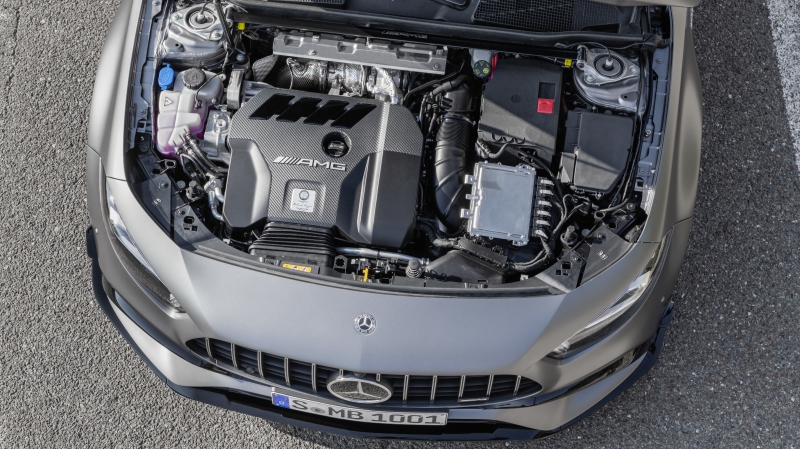The world is a complicated place. Often times too complicated for our primate brains, which is why we like to use buzzwords. Snappy words like ‘big data’, ‘clickbait’, and ‘disruptor’, serve to simplify big concepts. Though it is sometimes used to romanticise seemingly simple definitions, like the word ‘supercar’.
Like many buzzwords, ‘supercar’ is easy to understand, but hard to define. What is a supercar? Is it a mid-engine performance car? Well, a Lotus Elise is one, but nobody calls that a supercar.

What about top speed or an exotic V12 engine? That too goes out the window and under the bus. The last few speed record holders had V8s, not to mention American V8s. So, don’t think too much about it or your head starts to hurt.
All buzzed up with no substance

The reason buzzwords are brought up is that the dawn of the ‘hyper hatch’ is upon us. What is a ‘hyper hatch’? That too is anyone’s guess. Nobody is going to lay down an ISO certification for this sausage measuring contest. As such, we have to roll with the most accepted definition – a faster version of the Golf GTI and its contemporaries.
The ‘hyper hatch’ term was recently thrown about to contextualise the power outputs of the new Mercedes-AMG A45 S. With 310kW on tap, the horsepower merchants at AMG has finally breached the 300kW ceiling of hot hatches.
First shots fired

The 300kW ceiling that was first set upon by Volkswagen with its Golf R 400 concept back in 2014. Apparently Volkswagen was serious about putting a 294kW Golf into production six years earlier, but Dieselgate sunk the idea.
The 300kW Golf might have fallen, but there was little to stop the hot hatch world’s ongoing horsepower war. All of which has led us to the second-generation A45 S. With it, the age of the hyper hatch has finally dawned upon us and what a lonely one it is turning out to be.
Failed to launch

Shortly after the debut of the A45 S, Ford cancelled development of its 300kW fourth-generation Focus RS. Originally planned to bring the hot hatch crown back to Dearborn, Ford axed it mid-way through its development. Apparently Europe’s increasing taxation on emissions was the law that broke its back.
It is yet to be seen if Volkswagen will create a worthy competitor in the eighth-generation Golf. Though it would be far likelier that Audi will be handed the job for taking on AMG. BMW, on the other hand, removed themselves from the equation altogether, stating that the comparatively mild M135i is as hot as their hatch is going to get.
For now, it looks likely that the newly minted hyper hatch genre is going to be a two-horse race. With only two contenders for the near future, could this be the indication that we have reached peak car?
Is this “Peak car”?

Like many buzzwords too, ‘peak car’ has no exact definition. Just what is or was the peak of cars? Some might argue that it was the 2005 Bugatti Veyron. Certainly in terms of engineering, though the world has seen advancements in hybrid tech and all-electric drivetrains that surpass the Veyron’s capabilities since.
That being said, is ultimate performance and technology the only bar to define that we have reached the peak? Certainly not. Performance and technology are but an aspect, not the whole subject.
The impossible hill to climb

From a broader perspective, ‘peak car’ could define a point in time when we have explored every possible iteration of an automobile. Could hyper hatches be it? Where do we go from building small and practical family cars with enough firepower to outgun two-decades-old supercars? Judging from the cancellation of the Focus RS, it might seem that entering the hyper hatch club is one with unsurmountable difficulties.
No matter what technology it boasts or performance it promises, there is only so much money customers will pay for a small car. With lower price expectations means thinner profit margins, which means a tighter development budget. Mercedes-AMG, and presumably Audi Sport, can afford their way into the hyper hatch club with its business case buoyed by its brand premium.
Reaching the limit of niches

It is highly unlikely that we will see any form of automotive excess in the lower categories. There won’t be ‘ultra-luxury city cars’ or ‘super..er..superminis’. See the Aston Martin Cygnet if you need convincing.
On the other end of the scale, the creation of million-dollar ultra-luxury cars and ‘hypercars’ isn’t creating any new niches. The likes of BMW’s rumoured X8 large-SUV-coupe and Ferrari’s “totally-not-an-SUV” Purosangue are merely exercises of excess for ultra-wealthy customers. Not only are these merely extensions of existing niches, like ‘hypercars’ are to ‘supercars’, it has little relevance to the average car buyer.

The hyper hatch might be the lowest form of excess in automotive segmentation. It might also be the last frontier in the car market. Beyond this, it looks as though the industry will be creating iterations upon iterations of existing segments. All the while, its marketing department pull all-nighters to create new buzzwords to justify the existence of their latest product. Good, because all this buzzword business is becoming a circle jerk of weasel words. And I want out.

